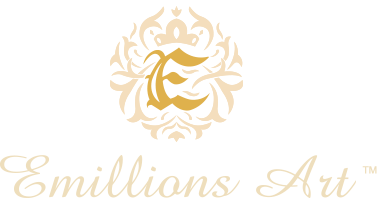An “exhibition” is a curated presentation of artworks that serves as a public display and a significant event within the art world. It is a carefully planned and organized showcase of artistic creations, including paintings, sculptures, photographs, installations, and various other media intended to convey a particular theme, artistic movement, or concept to an audience. Exhibitions play a fundamental role in disseminating art, fostering dialogue, and developing art history and cultural discourse.
Key elements of an exhibition in the fine art realm include:
Curatorial Concept: An exhibition is typically centered around a curatorial concept or theme, which may be based on an art movement, an artist’s body of work, a historical period, or a specific idea. This concept guides the selection and arrangement of artworks.
Artwork Selection: The curator, often an academic expert or art historian, carefully selects artworks that are relevant to the exhibition’s theme and narrative. This selection process is informed by scholarly research and connoisseurship.
Display and Installation: The way artworks are displayed and arranged within the exhibition space is a crucial aspect of the curatorial process. Considerations like lighting, spatial layout, and aesthetic presentation are considered.
Educational Components: Exhibitions in academic contexts often include educational elements, such as wall labels, catalog essays, and didactic materials, to provide viewers with background information, historical context, and insights into the artworks.
Public Engagement: Exhibitions are designed to engage the public, including art enthusiasts, scholars, students, and the general audience. They provide an opportunity for viewers to interact with the art, reflect on its meaning, and discuss it with others.
Scholarly Contributions: In academic exhibitions, the curatorial team may produce scholarly publications or research related to the theme of the exhibition. This research can contribute to the broader field of art history.
Catalogs and Documentation: An exhibition catalog is often produced, documenting the artworks on display, providing in-depth analyses, and serving as a lasting record of the exhibition. This catalog can include essays by art historians, artist statements, and high-quality images of the artworks.
Artistic Context: The curatorial team places the exhibited artworks within their artistic, historical, and cultural contexts, helping viewers understand the significance of the art and its relation to broader intellectual currents.
Public Programs: To enhance the educational aspect of exhibitions, public programs such as lectures, workshops, guided tours, and panel discussions are frequently organized, offering opportunities for deeper engagement with the artworks and the curatorial concepts.
Artistic Promotion: Promoting the exhibition is essential to attract a diverse audience. It often involves marketing strategies, press releases, and collaborations with cultural institutions.
Academic exhibitions showcase artworks and are a platform for scholarly investigation, interpretation, and critical discourse. They contribute to disseminating knowledge, encouraging aesthetic appreciation, and promoting dialogue about art’s role in society and culture.



